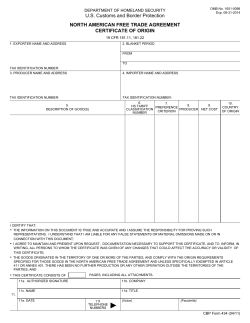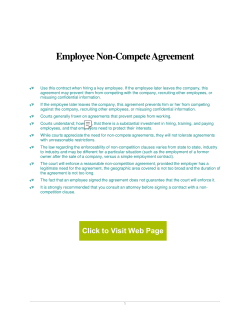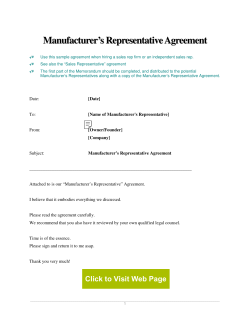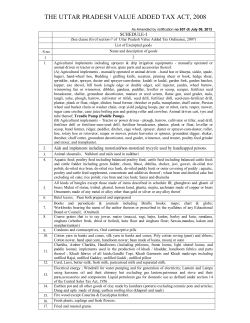
Document 47543
F E D E R A T I O N B A N C A I R E D E L ' U N I O N E U R O P E E N N E B A N K I N G F E D E R A T I O N O F T H E E U R O P E AN U N I O N BANKENVEREINIGUNG DER EUROPÄISCHEN UNION in co-operation with E U R O P E A N S A V I N G S B A N K S G R O U P E U R O P E A N A S S O C I A T I O N O F C O O P E R A T I V E B A N K S G R O U P E M E N T E U R O P E E N D E S C AI S S E S D’ E P AR G N E G R O U P E M E N T E U R O P E E N D E S B AN Q U E S C O O P E R AT I V E S EUROPÄISCHE SPARKASSENVEREINIGUNG EUROPÄISCHE VEREINIGUNG DER GENOSSENSCHAFTSBANKEN European Master Agreement Annex for Derivative Transactions Explanatory Memorandum This explanatory memorandum is intended to assist parties who are considering using the European Master Agreement (EMA) and the Derivatives Annex published by the Banking Federation of the European Union (FBE) to document their derivative and foreign exchange transactions by highlighting certain issues, which they may wish to consider. This memorandum is not intended to provide any legal advice to parties and parties should consult their own legal advisors for legal advice on any particular issue. With the Derivatives Annex, the EMA provides a framework within which parties are able to document repurchase and lending transactions on securities as well as “over the counter” derivative and foreign exchange transactions. By bringing together all transactions under one roof it is possible for parties to agree on a single set of clearly defined events or circumstances in respect of a party the occurrence of which could entail the termination of all outstanding transactions between the parties, thereby avoiding a situation where a particular event or circumstance may entail the termination of some transactions but not of others. By combining the settlement amounts in respect of all outstanding transactions into one single net amount upon early termination, the potential for reducing credit exposure (and capital adequacy requirements) through netting is maximised. Last but not least, parties have the possibility to calculate margin calls on a net basis in respect of all transactions outstanding between them. Included transactions The terms of the Derivatives Annex (and any agreed Supplement) and the Master Agreement will govern those Derivative Transactions where the parties have agreed that these terms will govern a particular transaction. In most cases, this agreement between the parties will be evidenced in the confirmation for that transaction. For some transactions, however, confirmation formats are standardised so that, for example, these confirmations can be exchanged via an electronic system. For such transactions, it is not always possible to include in the relevant confirmation a reference to a master agreement. In such cases it is usual for parties to agree in the master agreement that the terms of their master agreement will automatically govern these transactions, even if the confirmations thereof do not make any reference to the master agreement. The Derivatives Annex provides that Foreign Exchange Transactions (as defined in the Supplement for Foreign Exchange Transactions) will automatically be governed by the Master Agreement without further reference in a confirmation where the parties have agreed to incorporate the Supplement for Foreign Exchange Transactions in the Derivatives 2 Annex. In cases where there may be some uncertainty as to the meaning of “spot transactions” in the context of foreign exchange transactions and hence legal uncertainty as to whether such transactions are included in statutory close-out netting rules, parties can agree in the Special Provisions to exclude these spot foreign exchange transactions from the scope of their Master Agreement. Parties can also agree in the Special Provisions that further types of transactions may be included automatically in the Derivatives Annex. Parties intending to include in the Derivatives Annex further transactions should however be careful to identify accurately the types of transactions to be included and may wish to consider whether it would be helpful to refer for this purpose to definitions of transactions published by other industry associations, which may provide appropriate definitions for the transaction types in question. The FBE has commissioned legal opinions for the EMA and the Derivatives Annex on the assumption that parties to the Master Agreement will only include transactions of the generic types referred to in paragraphs (i) through (iv) of Section 1(1)(a) of the Derivatives Annex; any reservations which an opinion writer may have (i) as to whether the close-out netting provisions of the Master Agreement would be valid for a particular transaction type referred to in paragraphs (i) through (iv) of Section 1(1)(a) of the Derivatives Annex and (ii) whether including that transaction type would affect the netting of the other transactions will therefore be mentioned in his opinion. Parties wishing to include in the Master Agreement transactions which do not fall within the categories referred to in paragraphs (i) through (iv) of Section 1(1)(a) of the Derivatives Annex and to rely on the close-out netting provisions should consult their legal advisors as to the consequences of including such particular transactions. Market Standard Documentations/technical definitions and governing law The drafters of the EMA derivatives working group decided that, at this stage, it would be neither helpful nor necessary for the FBE to produce new sets of technical definitions for the complete range of derivative transactions now being traded. Indeed, a number of definitions has already been published in different forms and are being used widely by participants in the derivatives markets (“Market Standard Documentations”). The Derivatives Annex has therefore been drafted on the assumption that parties may wish to use definitions published by an industry association or a banking association to assist them in defining technical terms of their transactions. Nonetheless, the EMA derivatives working group felt that it would be helpful to offer a set of definitions for “plain vanilla” foreign exchange, interest rate derivative and option transactions. These definitions are contained in the Supplements “Foreign Exchange Transactions”, “Interest Rate Transactions” and “Option Transactions”. It must be stressed that these Supplements are not intended to change established market practice by introducing new or modified definitions. The aim is instead to obtain further harmonisation and standardisation by codifying a set of definitions which reflect what the EMA derivatives working group believes to be the current market standards. Other Market Standard Documentations may be incorporated by reference in a Confirmation or may be incorporated by agreement between the parties in the Special Provisions. Parties should, however, review the terms of such Market Standard Documentations to identify any terms which may have been drafted for use with a particular form of master agreement and which may therefore need amendment when used in conjunction with a different form of master agreement. If the parties do not agree otherwise in the Special Provisions, the terms of these Market Standard Documentations will be construed in accordance with the law governing the Master Agreement agreed by the parties in the Special Provisions. The drafters of the Derivatives Annex recognised, however, that Market Standard Documentations are usually drafted for use together with national or international industry master agreements under a particular governing law. The Special Provisions enable the parties, if they wish, to agree that the terms of the 3 Market Standard Documentations which they specify may, in respect of certain Transactions, be construed in accordance with a different law from that which governs their Master Agreement. Parties can thus choose the law to govern their Master Agreement which they consider most appropriate for the Master Agreement relationship. At the same time, they can retain the flexibility to use the Market Standard Documentation which they consider to be the most appropriate for a particular derivative transaction and, if necessary, ensure that other similar transactions in their book may be documented using market standard terms which, as far as possible, are compatible with each other. Margin Maintenance Annex The Margin Maintenance Annex in the form designated “Edition January 2001” (Edition 2001) has been initially drafted with the intention to cover only Securities Lending and Securities Repurchase Transactions. With the Derivatives Annex, the drafters of the EMA derivatives working group have decided to amend the Edition 2001 of the Margin Maintenance Annex and to replace it by a new version designated “Edition 2004” (Edition 2004) in order to bring Derivative Transactions into the margining arrangements. Even though the Derivatives Annex and the Edition 2004 of the Margin Maintenance Annex were drafted with the possibility in mind that parties may wish to calculate margin across all transactions on a net basis, the drafters of the EMA recognised that the operational requirements for this may not yet be in place generally for all institutions using the EMA. The Special Provisions therefore contain provisions where parties may agree on which booking offices or subsets of transactions are to be included in the margin arrangements. Edition 2004 of the Special Provisions, General Provisions and Index of Defined Terms With the Derivatives Annex, the EMA derivatives working group felt that it would be necessary to amend the Special Provisions, the General Provisions and the Index of Defined Terms in the form designated “Edition January 2001” (Edition 2001) as such provisions and index had been initially drafted with the intention to cover only Securities Lending and Securities Repurchase Transactions. The drafters of the EMA derivatives working group have accordingly decided to replace the Edition 2001 of the Special Provisions, General Provisions and the Index of Defined Terms by a new version designated “Edition 2004” in order to take into account the addition in the EMA of Derivative Transactions and the documentation related thereto.
© Copyright 2025





















